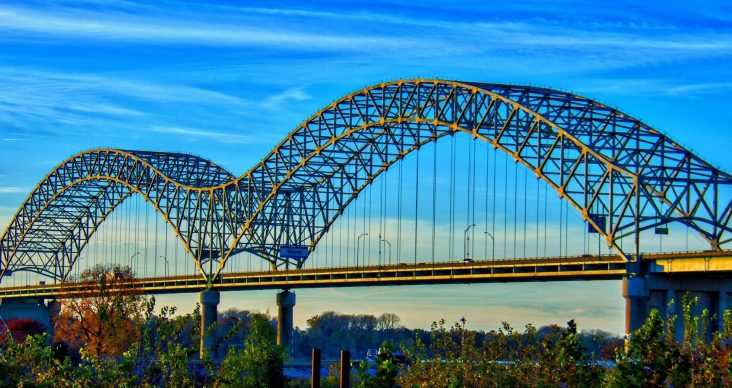ArDOT employee fired for not catching fracture in bridge; could be the subject of a federal criminal probe
by May 17, 2021 2:08 pm 9,425 views

A near catastrophic failure of the Interstate 40 bridge connecting West Memphis to Memphis could have been caught in early 2019, and the engineer charged with inspecting the bridge was fired Monday (May 17) for failing to do his job.
The employee, who was not named but had been with ArDOT for at least 15 years, didn’t conduct proper examinations of the bridge in 2019 or this year. Another firm, Michael Baker International, was inspecting other parts of the bridge when the fractured beam was observed by happenstance, Tudor said.
“He (the fired employee) didn’t see it. He wasn’t following proper protocols,” Arkansas Department of Transportation Director Lorie Tudor said. “He was supposed to inspect every inch of the bridge. He did not. We knew without a doubt he didn’t do his job properly.”
ArDOT has asked federal authorities to investigate the employee and his actions to determine if any criminal charges are warranted, Tudor said. Had the fracture not been discovered, the bridge could have catastrophically failed which could have led to lost lives, officials admitted last week.
The bridge also referred to as the Hernando de Soto Bridge is one of the busiest freight bridges in the U.S. A fracture to a main support beam was discovered Tuesday (May 11) and it caused the immediate shutdown of the bridge that carries about 41,00 vehicles per day. A cause has not been determined, Tudor said.
A “structure team” comprised of engineers from ArDOT, the federal government, the Tennessee Department of Transportation and Michael Baker International was formed last week and they have put together a phase one plan to stabilize the bridge, ArDOT deputy director and chief engineer Rex Vines said.
Phase one of the plan is to install steel plates to stabilize the fracture and stop it from getting any worse, Vines said. This repair will allow crews to safely make permanent repairs during phase two. Vehicle traffic will not be allowed on the bridge during phase one, Vines added.
Omaha, Neb.-based Kiewit Corp. was selected Monday to repair the bridge. A timeline for repairing the bridge will hopefully be developed later in the week, Vines said.
When asked why the fracture was not discovered when the drone footage was taken two years ago, Tudor said the video captured is five hours long and the part that shows the fracture is only a second or two long. Inspectors have determined that the fracture has grown since 2019, but it’s not clear if it had been found then, that the bridge could have remained open while those repairs were done, Tudor said.
All bridges and inspections conducted by the employee will be reviewed in the coming months, she added.
ArDOT is responsible for the inspection of the bridge while the Tennessee Department of Transportation will conduct the repair work. How much it will cost is still unknown. A few early reports said it could take months to repair the bridge.
When asked if flooding problems could have led to the damage, Tudor said it is still unknown.
ArDOT will be the subject of a federal inquiry into its methods and practices for inspecting bridges, and it’s an inquiry that Tudor supports.
“We should have discovered this crack in 2019. This incident has highlighted a flaw in our process … we welcome this assessment and we hope this never happens again,” she said.
